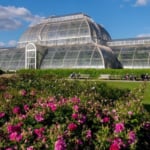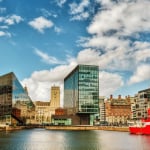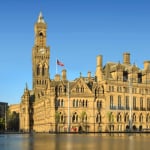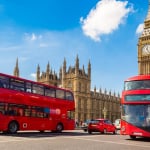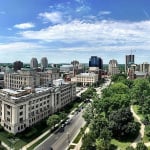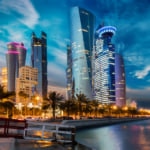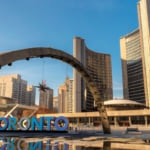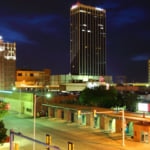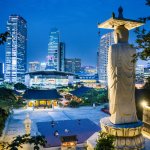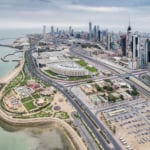Discover the locations of Banksy's iconic artworks across central London and learn how to get there easily.
Banksy is a mysterious street artist active mainly in the UK, with his true identity completely unknown. Unlike traditional painters who use canvases, Banksy creates his pieces on public walls, signs, and streets—making headlines every time a new artwork appears.
Although some of his works have been removed as graffiti, many are preserved and have even turned the surrounding areas into tourist attractions. In this article, we’ll introduce specific places in London where you can see Banksy’s art, along with access information. Be sure to check them out for your next street art adventure in London!
table of contents
[x] close
[London] Where to Find Banksy’s Artwork|Access Guide Included!
Who is Banksy?
Banksy is a street artist based in the United Kingdom, known for creating graffiti art on seemingly ordinary walls in public spaces. His works often carry powerful political or social messages. However, since graffiti is considered vandalism and illegal in many places, Banksy’s identity and background remain completely anonymous. His activities can be followed through social media.
Banksy's artworks typically reflect strong themes such as political issues, social injustice, and anti-establishment commentary. Even without captions, his art invites public interpretation and discussion, often causing a stir simply by appearing in unexpected places.
Banksy began creating art in the early 2000s and has since produced numerous pieces, although his appearances are unpredictable. In 2024, he gained attention for releasing several new artworks in quick succession, showcasing his prolific activity within a short span.
Where to Find Banksy’s Art in London?
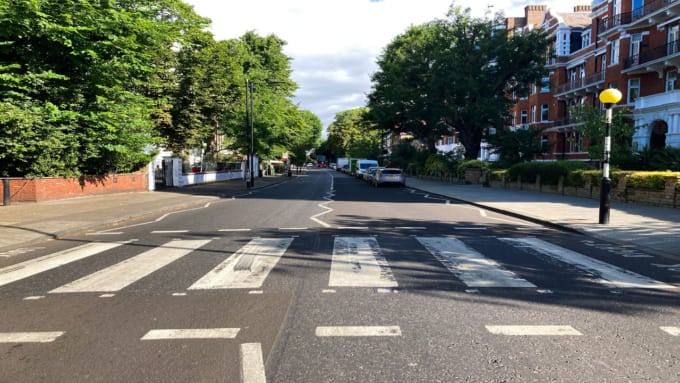
Before diving into the specific locations of Banksy’s work in London, let’s understand a bit of background. Banksy’s street art has become increasingly popular over the years. Once a new artwork appears, it often attracts crowds of art lovers and tourists alike. While many local councils now officially declare efforts to preserve his works, the nature of graffiti means there’s always a risk that the artwork may be painted over or removed entirely.
In some cases, property owners may consider removing the artwork themselves—so if you’re hoping to see one in person, it’s best to visit sooner rather than later.
Basquiat Mural at the Barbican Centre
One of the best-known places to view Banksy’s art in London is at the Barbican Centre, one of Europe’s leading arts and culture venues. Two of Banksy’s murals remain intact on the walls of this cultural complex.
These particular murals—known as the “Basquiat pieces”—were officially confirmed as authentic Banksy artworks. They appeared on September 18, 2017, just before the UK’s first major Jean-Michel Basquiat retrospective exhibition in over 20 years.
The murals pay homage to Basquiat’s artistic legacy and are inspired by his past works, creating what many call an “unofficial collaboration” between two legendary street artists.
➤ “Basquiat Welcomed by the Police”
“Basquiat Welcomed by the Police” is a Banksy artwork inspired by Jean-Michel Basquiat’s painting Boy and Dog in a Johnnypump. While Basquiat’s original piece depicts a Black boy and a dog standing amidst flames, Banksy’s interpretation features the boy being surrounded and frisked by two police officers, portraying a powerful commentary on racial profiling.
In many societies, Black individuals are often subjected to police stop-and-frisk practices more frequently than White individuals, regardless of wrongdoing. The central figure in Banksy’s piece is believed to represent Basquiat himself, implying that even an influential Black artist like him would not be exempt from such treatment. This artwork serves as a satirical take on systemic racism and policing.
➤ “Ferris Wheel”
Another mural by Banksy titled “Ferris Wheel” is located just across the street from “Basquiat Welcomed by the Police.” The gondolas on the Ferris wheel are shaped like crowns—an homage to Basquiat’s frequent use of the crown symbol to represent Black heroes and excellence.
Although graffiti is typically removed quickly in this area due to strict enforcement, Banksy’s murals are treated as exceptions, highlighting their cultural significance and widespread admiration.
➤ Access to the Barbican Centre
The nearest Underground station to the Barbican Centre is Moorgate Station, located about a 10-minute walk away. From the station’s northwest exit, the Barbican Centre is easy to find—it’s nearby and quite distinctive, so visitors won’t have trouble locating it.
Please note that the Banksy artwork is not located inside the centre, but rather near the vehicle entrance in front of the complex.
https://maps.google.com/maps?ll=51.520864,-0.093931&z=18&t=m&hl=ja&gl=JP&mapclient=embed&cid=404547557280223705
The Rat (Banksy’s Wall Art near Barbican)
Just a 2-minute walk from the Barbican Centre, heading straight east from the entrance (turn left when exiting), you’ll come across one of Banksy’s lesser-known yet meaningful murals: a rat holding a placard, subtly painted on the corner of a building.
The placard currently reads "I love (♡) London ROBBO", but it originally said "London Doesn’t Work", as painted by Banksy. This mural became part of an artistic back-and-forth between Banksy and a street artist named Robbo. Following Robbo’s passing, the artwork has remained unchanged—a simple piece with a rich story behind it.
To reach this spot, just follow the walking directions mentioned above. It's only a couple of minutes from the Centre, but if you're driving, be careful not to miss it—it's easy to pass by in a car.
https://maps.google.com/maps?ll=51.520995,-0.09133&z=18&t=m&hl=ja&gl=JP&mapclient=embed&cid=7221186381859884942
The Painter (Notting Hill)
One of the few remaining Banksy artworks in London is “The Painter,” located in Notting Hill. Created in 2007, this mural still exists today and continues to attract the attention of both art lovers and curious tourists.
“The Painter” features an image of a bearded artist appearing to tag the word “BANKSY” on the wall of a restaurant. This depiction mimics the act of tagging, which refers to marking public surfaces with a name or symbol. It’s as if the artist is being directed to write Banksy’s name—adding an ironic twist to the work.
The character is believed to represent Diego Velázquez, a renowned Spanish painter who became a court painter at a young age. The message behind the mural remains open to interpretation—some suggest it implies “a royal painter being commanded to tag a graffiti artist’s name,” while others see it as “a royal painter engaging in street art.” These diverse perspectives have fueled deep discussions among art enthusiasts.
Although the building was later sold and underwent renovations, Banksy’s mural was carefully preserved. Rather than being dismissed as mere graffiti, it has been safeguarded and remains a symbol of local pride and community interest.
➤ How to Access “The Painter” in Notting Hill, London
The Painter is located in the heart of Notting Hill, a vibrant area in West London. It’s just a 4-minute walk from Ladbroke Grove Station on the London Underground, and about a 20-minute walk from Notting Hill Gate Station.
This hidden gem can be found on the outer wall of the restaurant Prima Notting Hill, right at the intersection of Acklam Road and Portobello Road. The location is also conveniently close to the major A40 (Westway) highway, making it easily accessible by car or public transport.
Perfect for art lovers exploring the charming streets of Notting Hill!
https://maps.google.com/maps?ll=51.51796,-0.205439&z=17&t=m&hl=ja&gl=JP&mapclient=embed&cid=6407003516329169765
Designated Graffiti Area (Shoreditch)
Next, let’s take a closer look at the artwork titled “Designated Graffiti Area”, located in Shoreditch, London. The piece features a patrolling police officer and a dog on a leash, held by the officer. Could they be on a routine inspection of the designated graffiti zone?
This area showcases several other street artworks by various graffiti artists. Notably, Banksy’s piece, created in 2003, has been preserved and protected for many years. By painting a police officer—who is typically responsible for cracking down on graffiti—within a designated graffiti zone, the artwork delivers a sarcastic and ironic message, seemingly mocking the enforcement itself.
➤ Also Nearby: Banksy’s “His Master’s Voice (HMV)”
In the same courtyard where “Designated Graffiti Area” stands, you’ll also find another work by Banksy, titled “His Master’s Voice (HMV)”, alongside other street art.
This striking image shows a dog aiming a bazooka or rocket launcher at an old-fashioned gramophone. The HMV logo was originally inspired by Francis Barraud’s iconic painting and once represented mainstream music culture, dominating counterculture for a time. However, the brand later faced economic decline.
The old gramophone seems to represent traditional or conservative culture, while the dog symbolizes the youth or rebellious generation challenging the status quo.
➤ Access to the Designated Graffiti Area & HMV
To reach the Designated Graffiti Area and HMV, head towards Lavington Street in Shoreditch, London.
Both works can be found in the courtyard of the Cargo Nightclub, located on this very street.
As mentioned earlier, artworks by other artists are also preserved in this area, so make sure to take some time to appreciate those as well when you visit.
https://maps.google.com/maps?ll=51.526299,-0.078879&z=17&t=m&hl=ja&gl=JP&mapclient=embed&cid=14823749842352038680
Yellow Flower (Bethnal Green)
Next, let’s explore Yellow Flower, located in Bethnal Green, slightly east of central London.
As its name suggests, Yellow Flower is striking in its simplicity — a massive yellow flower painted on a wall. The road that cuts across the sidewalk has a double yellow line, and this line continues upward into the shape of the flower, making the entire work feel unified with the environment.
Compared to the previous graffiti artworks, this one stands out for its color palette and unique artistic expression.
Today, the area appears livelier, as additional graffiti has been layered over the original piece.
➤ How to Access Yellow Flower
Nearest Station: Bethnal Green Underground Station
From the station, it's about a 10-minute walk.
Walk westward along the main road (A1209) in front of the station. Turn right at the Pollard Row bus stop. Continue straight down Pollard Row, and soon you’ll see Yellow Flower appear before you.
https://maps.google.com/maps?ll=51.528017,-0.063789&z=19&t=m&hl=ja&gl=JP&mapclient=embed&cid=8253419557160683048
Very Little Help
Heading to the northern part of the city, we introduce the famous Banksy mural known as "Very Little Help", also referred to as the "Tesco Kids" mural. You can find it along Essex Road.
Painted in 2008, the artwork features children raising a Tesco shopping bag like a national flag, symbolizing an eerie allegiance to the UK supermarket giant. Through this surreal scene, Banksy expresses his critique of mass consumerism and the overpowering influence of big corporations in modern society.
Though the original mural has been altered several times — the Tesco logo has since been removed and replaced by artwork from another graffiti artist known as Robo — the mural is still visible today, albeit in a weathered condition.
The Nearest Station is the Essex Road Station. It is located on the wall of Savemain Pharmacy.
Banksy’s “Tree Mural”
The “Tree Mural” is a powerful piece by the renowned street artist Banksy, unveiled in 2024. This thought-provoking artwork is located on the wall of a public housing block in Finsbury Park, London.
At first glance, the wall appears to simply feature a person beside a splash of vivid green paint. However, when viewed alongside the withered tree standing just in front of the mural, the composition transforms. It gives the illusion that the tree’s greenery has returned, as if life is being breathed back into it through the artist’s intervention.
The decaying tree, once neglected and poorly maintained, has now become a focal point for preservation. Thanks to Banksy's creative vision, the surrounding scenery is receiving renewed attention and care.
➤ How to Access the “Tree Mural”
The closest station is Finsbury Park, which is served by both the London Underground and National Rail. The mural is roughly a 20-minute walk from the station and is situated within a public housing complex.
From the station, walk southwest along Seven Sisters Road (A503). When you reach the intersection with A103, turn right and continue walking straight for about 10 more minutes. The artwork will appear on the right-hand side of the street.
https://maps.google.com/maps?ll=51.564713,-0.122081&z=16&t=m&hl=ja&gl=JP&mapclient=embed
Banksy Week Emerged in 2024!
Banksy's iconic pieces continue to be seen across various corners of London. While each new artwork usually makes headlines, the summer of 2024 saw something truly extraordinary: a “Banksy Week” where new works appeared daily for over a week, captivating both locals and tourists alike.
Before this event, London had been plagued by gloomy news, but as Banksy's works began to emerge day after day, the media shifted to a more positive tone. It seems the artist’s creations brought a noticeable uplift in public sentiment and media coverage.
Although some of the murals remain in their original locations and can still be seen, art theft targeting Banksy's works has led to several being removed for preservation. Therefore, not all pieces remain in the exact spots where they first appeared.
Each new piece has become a major topic of conversation. So, where exactly did these thought-provoking Banksy artworks show up in London? Let’s explore the trail of the 2024 Banksy Week.
GOAT (Q Road – Kew Bridge)
Appearing on the very first day was a mysterious “goat” figure on the outer wall near Kew Palace in Richmond, West London. Located less than a 10-minute walk from Kew Bridge Station toward the River Thames, this shadowy artwork of a “GOAT” suddenly appeared.
Perched atop a fragile-looking pillar, the goat seems as though it could tumble down at any moment. The scene appears to be under the watchful eye of London’s ever-present CCTV security cameras, which are scattered throughout the city.
Whether it’s a commentary on privacy or a metaphor for being “on the edge,” the true message remains open to interpretation. Regardless, this piece is considered one of Banksy’s most accessible artworks in London.
Elephants (Battersea Park)
On the second day, a striking art installation appeared in Battersea Park, located in southwest London. Two windows on a house on Edith Terrace were sealed shut, and from them, two facing elephants emerged, stretching their long trunks outward.
There is no explanation or caption provided for this artwork either, leaving it open to personal interpretation and deeper analysis. Interestingly, starting from this second piece, there are now two elephants, possibly symbolizing a growing theme.
https://maps.google.com/maps?ll=51.482426,-0.182443&z=18&t=m&hl=ja&gl=JP&mapclient=embed&cid=1186919998718080625
3 Monkeys
On the third day, another thought-provoking artwork surfaced—this time on a street under a railway overpass. It featured the "Three Wise Monkeys".
This instantly evokes the image of the famous Three Monkeys from Nikkō Tōshō-gū Shrine, known as See no evil, Speak no evil, Hear no evil. Interestingly, the same concept has been widely adopted in the UK and holds nearly the same meaning, showing that this symbolic trio is recognized worldwide.
Like the previous installations, this piece also lacks any captions or descriptions, inviting viewers to explore its meaning on their own through various interpretations.
The nearest station to the “3 Monkeys” is Shoreditch High Street. From the station, walk along Sclater Street, then turn right onto Brick Lane, and you’ll spot the piece shortly.
https://maps.google.com/maps?ll=51.523092,-0.071514&z=18&t=m&hl=ja&gl=JP&mapclient=embed&cid=13010089455150119543
The Wolf and the Pelicans
On Day 4, Banksy revealed a lone wolf seemingly howling at an antenna. Unlike previous days where the number of animals steadily increased, this time only one animal appeared. The focus was a wolf howling at an antenna—an image that quickly turned into a scandal when the antenna was stolen shortly after the artwork appeared. This sudden theft of an easily removable object has caused quite a stir. Let’s hope the stolen piece is returned soon.
Wolves are often associated with endangered species. As viewers, their extinction feels like a loss. However, in livestock-focused nations, wolves are often seen as harmful predators, and there seems to be little regret over their decline.
On Day 5, two pelicans appeared in North London. One of them seems to have caught a fish and is about to swallow it. The behavior of the second pelican remains unclear, sparking curiosity.
The deeper meaning behind these animals is still unknown. However, the lone wolf may symbolize concerns over endangered species. Online discussions continue to explore various interpretations, fueling debate.
If you're interested in seeing the pelicans, head to St. James Street Station in North London. Nearby, you'll find Bonners Fish Bar, a fitting spot to visit given the artwork's fishy theme.
Day 6 – A Cat Appears in London’s Northwest
On August 10th, the sixth day of Banksy's streak, a new artwork emerged—this time featuring a cat drawn on an unused wooden signboard in northwest London.
Due to the theft incident on the previous day and the fact that timber materials are prone to being stolen, authorities are reportedly considering removing the piece. Its public display status remains uncertain, so art enthusiasts are encouraged to stay updated on the latest news.
Day 7 – A School of Piranhas?
Following the appearance of the cat, August 11th brought a surprising twist: piranhas in the city!
Banksy’s latest piece features a realistically painted swarm of piranhas inside a police call box in London. From a distance, it genuinely looks like the piranhas are swimming inside, transforming the public phone box into an unexpected aquarium.
To ensure the artwork is preserved, the police box has been removed and relocated to Guildhall Yard, where it will be displayed in a proper environment for public viewing.
Day 8 Surprise: A Rhino and an Abandoned Car
Just when people thought the week-long streak had ended, Banksy revealed another piece on the 8th day. This time, the spotlight is on a powerful rhinoceros that looks like it could easily crush a car beneath its feet.
A real, abandoned passenger car was placed on the street. From a distance, it looks as though the rhino has rested its front legs on the roof of the vehicle. While the car is still intact for now, it appears to be moments away from collapse. On closer inspection, the car is part of the artwork—it cleverly mimics a rhino, with a traffic cone placed at just the right angle to resemble a horn.
Although theft wasn't a concern with this particular piece, it faced an unfortunate incident immediately after its unveiling. An unknown man, whose face was hidden, defaced the work by painting over parts of it. Despite many witnesses present, the perpetrator’s identity remains unknown.
https://maps.google.com/maps?ll=51.492665,0.037669&z=15&t=m&hl=ja&gl=JP&mapclient=embed&cid=4899216131502771802
August 14 Release: Banksy's Gorilla Frees the Zoo
On August 14, 2024, Banksy unveiled another new piece—this time on the shutter of the London Zoo. The artwork shows countless animals bursting out of the shutter, seemingly freed by a gorilla who appears to be opening it from within.
Throughout August, Banksy’s daily art appearances all focused on animals. Now the mystery is solved: the animals depicted were escapees from the zoo, thanks to the clever gorilla. Without any captions, it wasn’t clear at first—but this final piece connects the whole series together. According to reports, this gorilla mural marks the last installment in Banksy’s animal-themed creations this month.
However, this masterpiece is only visible when the zoo is closed, as the shutter is raised during operating hours.
The London Zoo, located in Queen Mary’s Rose Gardens, is in a district with several train stations nearby. However, it’s a bit of a walk from any of them. Visitors are advised to take a bus from Baker Street Station or Camden Town for easier access.
https://maps.google.com/maps?ll=51.535288,-0.15343&z=13&t=m&hl=ja&gl=JP&mapclient=embed&cid=12786351728261599912
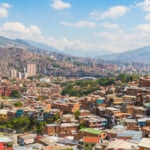
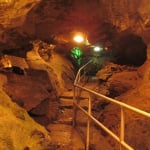
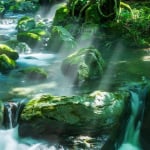

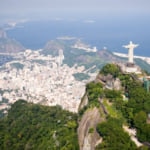
![[London] Where to Find Banksy’s Artwork|Access Guide Included!](https://skyticket.com/guide/wp-content/uploads/2025/03/f51f592e-777565068cc6a148c2499db582d9fb2b-1200x675.jpg)


